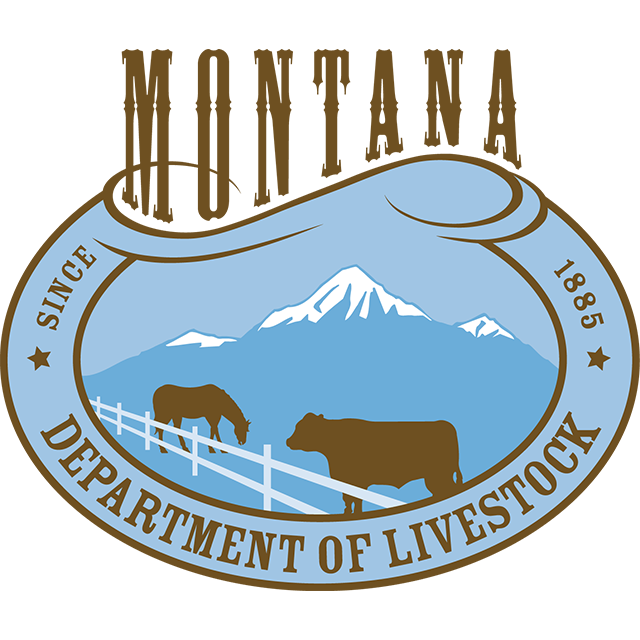
Here to serve the people of Montana and its livestock industry.
Animal Health Bureau
- Permits & Forms
- Brucellosis
- Brucella canis
- Feral Swine
- High Path Avian Influenza
- Johne's
- Rabies
- Trichomoniasis
- West Nile Virus
- National Poultry Improvement Program (NPIP)
- Pay for Permits Online
Helpful Links
Contact Information
Department of Livestock
Animal Health Bureau
PO Box 202001
Helena, MT 59620-2001
Email Us
Animal Health - Emergency Preparedness
Cattle- Secure Beef Supply (SBS)
- National Poultry Improvement Plan (NPIP)
- Defend the Flock
- Swine Health Improvement Plan (SHIP)
- Secure Pork Supply (SPS)
- Certified Swine Sample Collector Program (CSSC)
- Resources for Protecting Pets and Livestock
- Depopulation and Composting Exercise
- Incident Command System Training
- Foreign Animal Disease Diagnostician Training
- Experience with Disease Outbreak and Response
- Crisis Communications Training
Whether your ranch passes to future generations may depend on your willingness to prepare for the worst.
Emergency Preparedness for animal health has many considerations and is an important aspect of the Department of Livestock (DOL) Animal Health Bureau mission. From what to do if you are in a traffic accident with a horse trailer to having a biosecurity plan in place should a contagious animal disease threaten Montana’s livestock to where to stay with your dog during an emergency fire evacuation, there are many ways to prepare today to help minimize hardship during unexpected events.
The care of Montana’s animal population during disasters or disease outbreaks is important for safety, health, economic, environmental, and emotional reasons. A collaborative effort between state animal health officials, veterinarians, and animal owners can improve a community’s successful emergency preparedness and response.
DOL actively works towards preparing for livestock emergencies and has several resources below to help you get involved.
Programs for Livestock Disease Prevention and Control
Disease prevention and response plans for livestock are a crucial component for maintaining business continuity, maintaining food supply, and minimizing financial burden on livestock producers. Should a trade-disrupting disease outbreak occur in the United States, regulatory officials will stop movement of animals and animal products to minimize spread of the disease and determine where the disease is present.
The following are voluntary programs, organized by species, that DOL strongly recommends livestock producers participate in to reduce animal loss and financial hardship should a foreign animal disease outbreak occur. Additionally, producers with these plans in practice will be given priority to restart movement of products and maintain business and may help qualify producers for indemnity.
Cattle
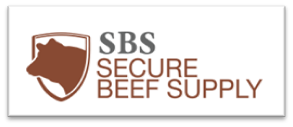
A Secure Beef Supply Plan (SBS) is a plan that beef producers can create to prepare for a stop movement order, enhance biosecurity, and minimize risk of disease exposure before and during a disease outbreak, such as Foot and Mouth Disease (FMD).
A SBS plan will better position a beef premises with cattle that show no evidence of infection to:
- Limit exposure of their animals through enhanced biosecurity.
- Obtain movement permits issued by regulatory officials.
- Maintain business continuity for the beef industry, including producers, haulers, and packers during a disease outbreak.
SBS plans must be created in collaboration with your herd veterinarian, submitted to State Animal Health Officials at DOL, and include the following:
- Premises Identification Number (PIN)
- Contact DOL State Animal Health Official at 406-444-2976
- Biosecurity Plan
- Including a map of premises which indicates a Line of Separation (LOS)
- Movement records
- Disease monitoring
Poultry

The National Poultry Improvement Plan (NPIP) was started in the 1930s and has been highly successful at disease prevention/reduction in both commercial and backyard poultry flocks. NPIP certification requires periodic disease testing based on the type of birds present in the flock, which allows for monitoring of disease.
NPIP benefits include:
- Knowing the health status of your flock
- Buyers of your product can certify that you meet testing requirements
- Can be used for interstate movement in some cases
- Many states of destination require a Pullorum-Typhoid test and Avian Influenza monitoring
- Depending upon type of poultry, you may be able to use current testing as proof of recent testing for shows, swaps or exhibition
- Maintaining participation may allow for indemnity in the event of a confirmed outbreak
Poultry owners can become NPIP certified by contacting their flock veterinarian or State Animal Health Official (SAHO) at DOL. Requirements include:
- Premises Identification Number (PIN)
- Contact DOL State Animal Health Official at 406-444-2976
- Complete required testing for each certification with a veterinarian or Authorized Testing Agent (ATA).
- Keep records of poultry purchases and sales using VS 9-3 forms via the NPIP database.
- Follow proper biosecurity measures recommended by the United States Department of Agriculture Animal and Plant Health Inspection Service.
Visit DOL Montana NPIP program page for more information.
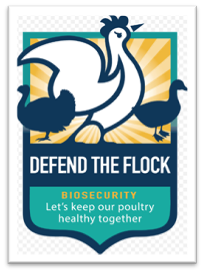
The USDA Defend the Flock program offers several free resources for protecting your poultry. By practicing good biosecurity, you can reduce the risk of people, animals, equipment, or vehicles carrying infectious diseases onto your property – either accidentally or on purpose. You will also help protect other flocks by preventing the spread of disease.
Swine
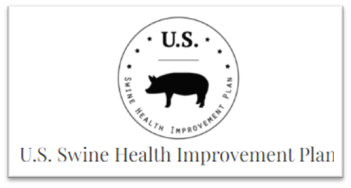
The Swine Health Improvement Plan (SHIP) was modeled after the NPIP program and aims to safeguard and improve the health status of swine across participating production sites. SHIP evaluates a site’s biosecurity plan, movement data, and premise information to provide certification to qualifying sites. Unlike NPIP which requires periodic testing for certification, currently there are no requirements for testing of hogs during peacetime (which is when no foreign animal disease is present in US).
SHIP certification gives producers, State Animal Health Officials, and shipping destination sites increased confidence in freedom from disease. Production sites with SHIP certification will have priority for movement permits to restart commerce after the initial stop movement order.
SHIP certification requires:
- SHIP Enrollment Form (PDF)
- Email to DOL Merry Michalski, DVM at merry.michalski@mt.gov
- SHIP Biosecurity Survey (complete online survey)
- Secure Pork Supply Plan
- Ability to provide 30 days of movement data electronically in a timely manner
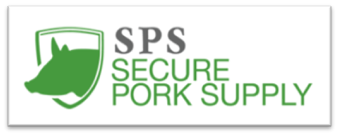
A Secure Pork Supply Plan (SPS) is a plan that swine producers can create to prepare for a stop movement order, enhance biosecurity, and minimize risk of disease exposure before and during an outbreak of African Swine Fever (ASF), Classical Swine Fever (CSF), or Foot and Mouth Disease (FMD).
A SPS plan must be created in collaboration with the herd veterinarian, submitted to State Animal Health Officials at DOL, and include the following:
- Premises Identification Number (PIN)
- Contact DOL State Animal Health Official at 406-444-2976
- Biosecurity Plan
- Including a map of the premises which indicates a Line of Separation (LOS)
- Movement records
- Disease monitoring
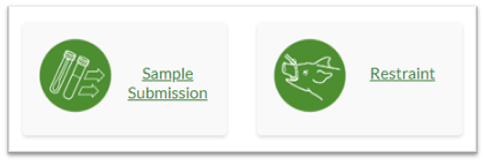
Certified Swine Sample Collector (CSSC)
During a large-scale foreign animal disease outbreak, federal and state veterinarians will be in extremely high demand. When this occurs, pork industry veterinarians, producers, and caretakers become critical resources in the sample collection process on production sites to test for the disease of concern.
This national swine sample collection training program will assure state and federal animal health officials that individuals have been trained by category II accredited veterinarians working in the pork industry to correctly collect, handle, and submit samples prior to or during an outbreak.
If you are a category II accredited veterinarian that works with swine producers, you are eligible to train swine caretakers to collect samples. If you are a swine producer and are interested in participating in the training, please contact your herd veterinarian.
For more information on the training process, please contact Merry Michalski, DVM with DOL.
Putting the Swine Emergency Preparedness Programs Together
| Sampling | Biosecurity Plan | Traceability | SHIP | ||
|---|---|---|---|---|---|
|
PREPARE NOW (Pre-event) |
No testing required. Visual monitoring for illness/disease.
Acquire training certificate for lay person sampling (CSSC) |
Create SPS plan: determine line of separation, prepare C&D stations, establish movement patterns and access points that limit disease spread |
Enroll in AG View or comparable program. Must be able to document at least 30 days of animal movement electronically. |
→ |
Enroll in SHIP by meeting these criteria |
|
IMPLEMENT DURING DISEASE EVENT *Finding ASF, CSF, FMD will result in a 72 hour stop movement nationally. |
Animal testing by Certified Sampler.
Initial testing sent to MVDL to demonstrate disease freedom. |
Apply SPS plan. Lockdown movement on and off premises. |
Provide movement data for animals and animal products to state animal health officials. |
→ |
SHIP enrollment becomes passport to restart movement if all aspects are adhered to and suitable to state animal health officials |
Protecting Livestock and Pets During Natural Disasters
Natural disasters or extreme weather can have a significant impact on livestock and pet health. The US Department of Agriculture (USDA) has several resources for preparing and protecting livestock during a disaster which can be accessed here. Additionally, the Center for Disease Control (CDC) has several resources for pet safety in emergencies which can be accessed here.
The Department of Livestock Brands Enforcement Division provides the livestock industry with professional law enforcement and investigative work in the tracking of livestock ownership and in the deterrence and/or resolution of related criminal activities. They may be available to assist during traffic accidents with livestock or travel disruptions with livestock which require facilities to house animals if roads are dangerous or closed. If you have an emergency contact 911, and if you need assistance with livestock please contact the local Brand Inspector.
Department of Livestock Emergency Preparedness Activities
DOL continually strives to be prepared for livestock emergencies. Some of the exercises DOL has participated include:
Large scale large animal depopulation and composting event
During Fall 2022, the National Pork Board (NPB) sponsored a swine depopulation and disposal full-scale exercise in five states: Montana, Colorado, Kansas, Nebraska, and Pennsylvania. Each exercise occurred over four days. The exercise was designed to learn about keeping African Swine Fever (ASF) out of the U.S. and preparing for a foreign animal disease outbreak, such as ASF.
- DOL, USDA, NPB, and Montana Disaster and Emergency Services (DES) veterinarians and staff worked with a Montana swine producer to practice the humane euthanasia of hogs using a foam technique. Foam euthanasia was successfully used as an alternative to traditional methods of depopulation.
- The training also addressed mental health impacts of a large-scale depopulation event.
- This opportunity also allowed the team to practice carcass composting for efficient and environmentally sound disposal.
Incident Command System (ICS) Training
DOL veterinarians and staff have been trained to employee an Incident Command System structure for response to emergencies. ICS is a standardized approach to incident management which:
- Is used for all kinds of incidents by all types of organizations and at all levels of government; ICS is applicable to small incidents as well as large and complex ones.
- Can be used not only for emergencies, but also for planned events.
- Enables a coordinated response among various jurisdictions and agencies.
- Establishes common processes for incident-level planning and resource management.
- Allows for the integration of resources (such as facilities, equipment, personnel) within a common organizational structure.
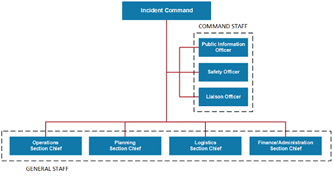
Foreign Animal Disease Diagnostician (FADD) Training
FADDs are state and federal veterinarians who are trained to examine animals with clinical symptoms of diseases that are not routinely observed in the United States. DOL veterinarians have completed this specialized training and are committed to keeping their disease evaluation skills up-to-date.
Highly Pathogenic Avian Influenza:
- An outbreak of Highly Pathogenic Avian Influenza (HPAI) has been occurring since the beginning of 2022. Throughout the outbreak, Montana DOL and USDA veterinarians and staff have worked together by applying the ICS structure to respond to the outbreak. The MT response team has implemented federal regulations of depopulation and disposal of over 80,000 infected poultry and have been successful at preventing lateral spread of HPAI.
- DOL conducted an epidemiologic investigation of tuberculosis (TB) in a single affected herd in Blaine County. The index herd was classified as “affected” when 3 animals were detected through a whole-herd test after a cull cow with TB was found at slaughter in July 2021. The herd was subsequently depopulated with indemnity from the USDA. Through this investigation, the department and federal staff tested nearly 8000 animals by caudal fold test (CFT) and tested 129 responding animals with a secondary test.
Crisis Communications Training
Be first. Be right. Be credible.
Nearly 20 DOL staff members participated in Crisis Communications Training. DOL recognizes our responsibility for providing information to the public on events with significant livestock impacts. The training prepared our staff for this crucial component of disaster response.

Additional Resources
Montana Disaster and Emergency Services (DES)
FEMA - Emergency Management Institute (EMI) Home Page
Pet Disaster Preparedness & Recovery | American Red Cross
Livestock disaster preparedness | The Humane Society of the United States